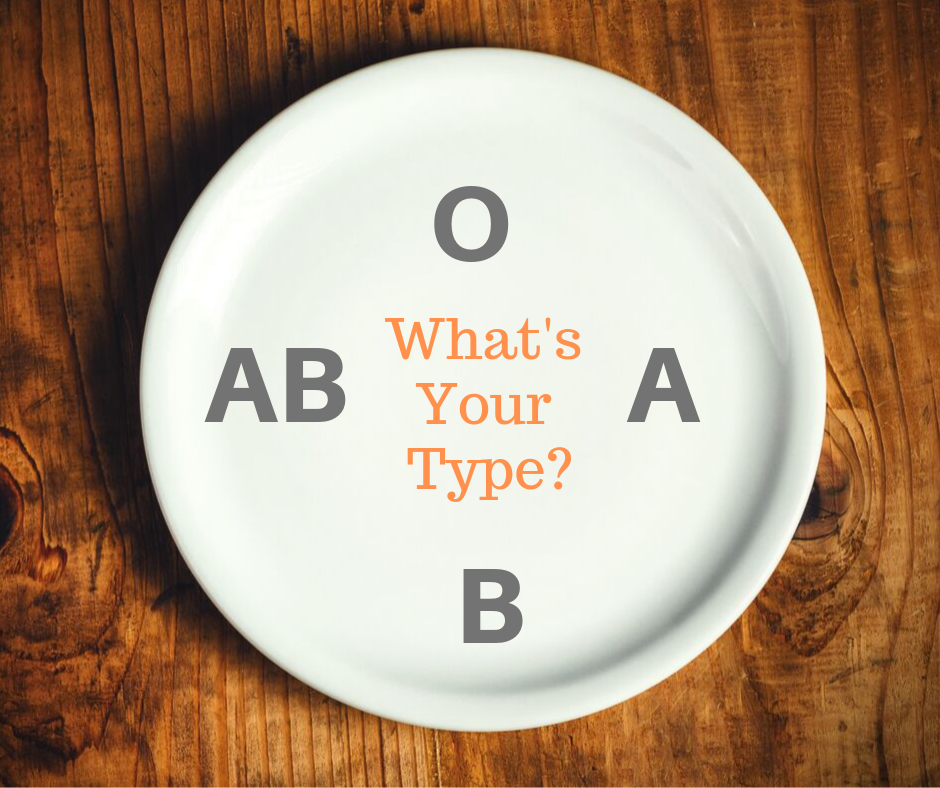Have you ever wondered about your blood type? It’s a valuable piece of information for many reasons, including if you needed blood in an emergency.
But it can also give you valuable lifestyle and dietary guidance.
Dr. Peter D. Adamo first wrote about how blood type can be used to fine-tune the diet and to guide forms of exercise. His approach is based on the theory that eating according to type reduces the clot-forming chemicals in our blood, preventing strokes and heart attacks.
While I don’t embrace every aspect of his theory, I do apply the general recommendations, which I have highlighted below. Since his approach is based on the effect of lectins on the blood, I don’t agree with his micromanagement of fruits and vegetables. Lectins are compounds in grains, vegetables, and legumes that he warns cause agglutination or clumping of the blood cells. These lectins, however, are broken down by cooking, especially with water, by fermentation, and by sprouting. Rarely do we eat raw grains, for example.
The successful way I’ve applied his theory over the years is utilizing the big picture: how much protein people should be getting and from what sources and what types of exercise suit them the best.
In summary, here’s what I’ve learned in working with thousands of clients over the years:
Blood Type O: The universal donor and most common blood type have the hardiest constitution. These were the original humans, the cavemen or the hunters-gathers, and they do best when they eat the ancestral diet.
If you have O Blood Type, your diet should consist of anything the original humans could have hunted, fished, dug from the ground, or picked from a bush. In other words, your best choices include meat and potatoes, nuts and seeds, root vegetables, and fruits. They have strong stomach acid and can easily digest meat.
They have success as vegetarians, but and they don’t tolerate dairy or grains as well as other types.
I have also noticed over the years that some blood types are more sensitive to eating according to type than others. Ironically, despite its strong constitution, an O blood type eating a vegetarian diet are the people who do worst.
“O”s need vigorous exercise such as running, biking, spin classes, and aerobics. They tend to be stress hardy.
Blood Type A: these are the farmers who came later. They can do limited grains, need less protein, and can eat soy and complementary proteins. “A”s can be vegetarian or vegan without any problem. They have less stomach acid and can be prone to digestive upset.
The “A”s need a routine schedule of sleeping and waking hours because of their more sensitive nervous system. For that same reason, they do best with relaxation exercises such as walking, yoga, and meditation to help them to maintain balance.
Blood Type B: this is the only blood type that does well with dairy, provided there’s no allergy to dairy protein. However, gluten and sugar are like poison for them, and chicken can cause the agglutination of blood. Turkey is a better choice.
B’s tend to have sensitive digestion but a strong immune system. They do well with cardiovascular exercise and smaller meals throughout the day. They need community/group activities more than the other blood types.
Blood Type AB: This is the rarest blood type, and only about 3% of the population have it.
This type thrives on a mixed diet of everything in moderation, watching out for susceptibility to Candida overgrowth and mucus formation. They have a sensitive digestive tract.
“AB”s tend to gain weight on meat, seeds, corn, and wheat and lose weight on seafood, organic dairy, and green veggies.
This type needs a clear plan for goals and should make lifestyle changes gradually. About 45-60 minutes of aerobic exercise at least twice a week works well, and they should practice visualization exercises daily.
Feeding family members with different blood types
You can’t make a separate meal for everyone in your household, but with these guidelines, you can provide choices that work for everyone. And you can eliminate those things that don’t work for most people (everyone should avoid refined carbohydrates and sugar).
If you are unsure of your blood type, there are a few easy ways to find out:
- Ask your doctor. If you’ve had elective surgery that required blood collection beforehand, they should have your blood type.
- Donate blood.
- Get a blood type kit from us. It’s a self-test that you perform at home and get immediate results. It’s a fun science experiment and it’s only $10.
Once you know your type, test out how much of the guidelines make a difference for you, both in eating choices and lifestyle. You might find it confirms things you were already suspecting about your needs, or it might introduce you to new pieces of the puzzle on how to feed yourself and move your body.
BeWell,






Add Comment